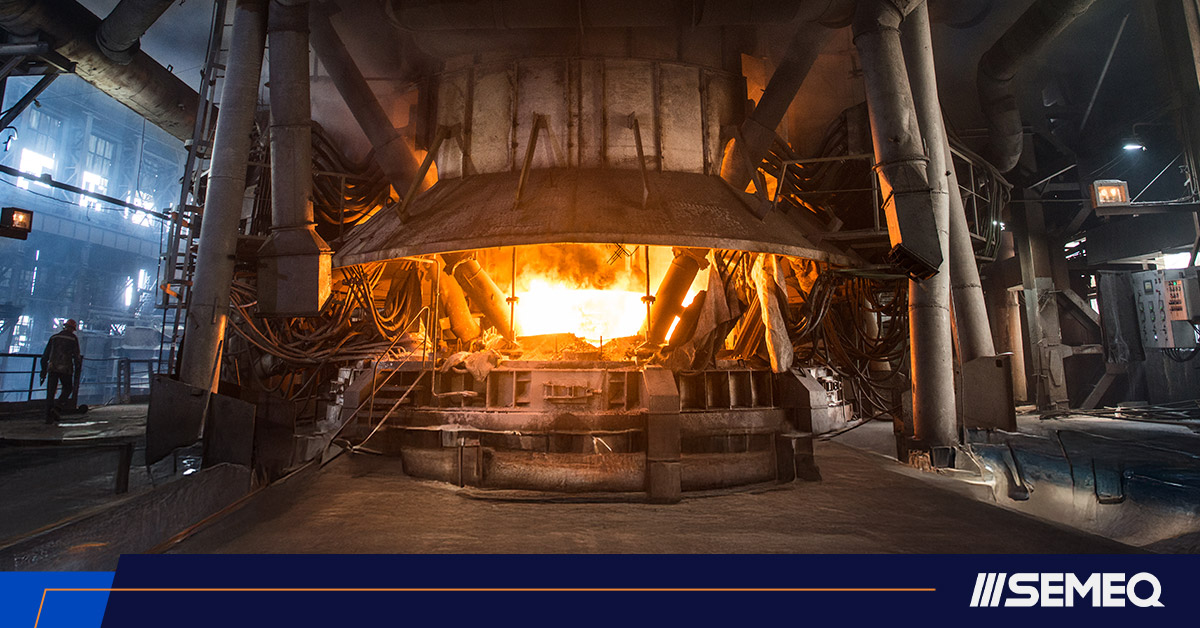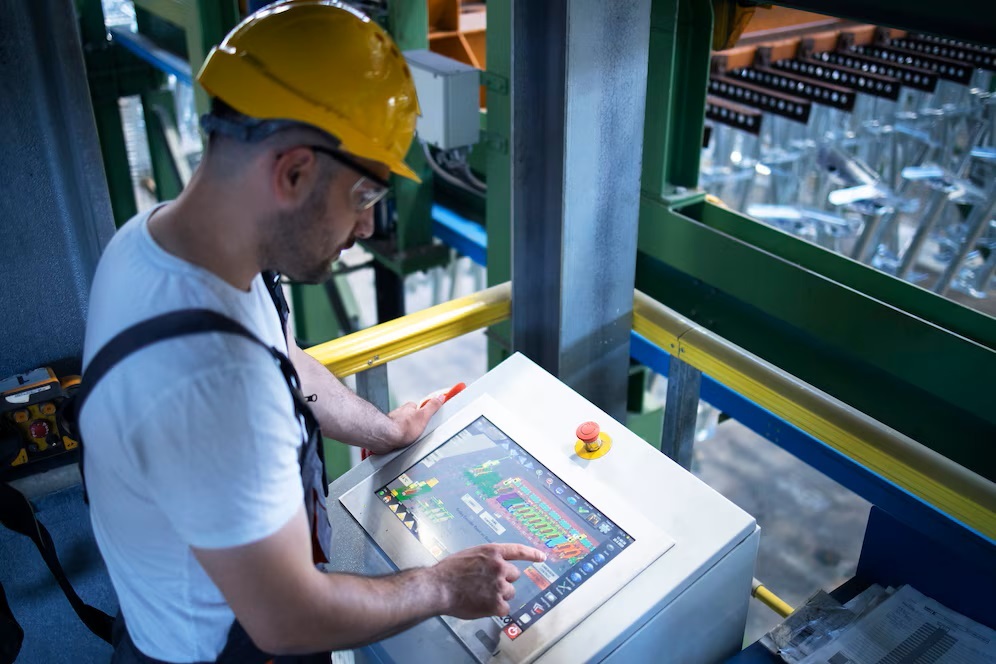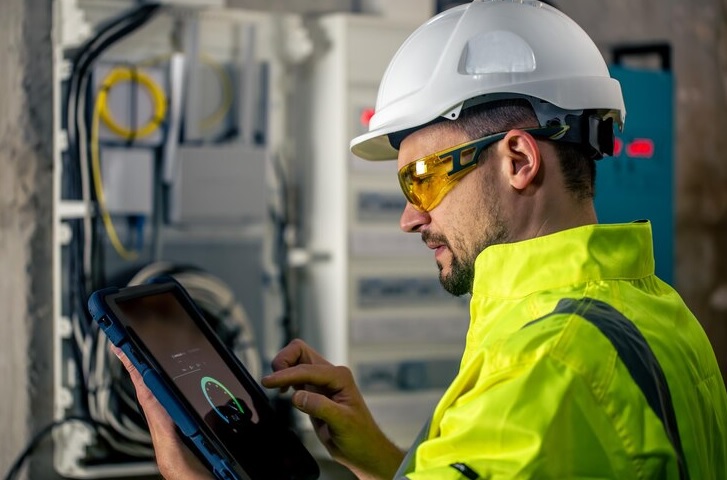Na indústria siderúrgica, a continuidade da produção é essencial para o sucesso. Paradas inesperadas, falhas de equipamentos e altos custos de manutenção podem afetar seriamente a lucratividade.
Os ativos críticos são os pilares da operação, mas também os pontos mais vulneráveis quando não são monitorados adequadamente. Identificar esses ativos, compreender seus modos de falha e adotar soluções modernas, como sensores inteligentes, são essenciais para garantir a confiabilidade operacional.
Se sua planta sofrer paradas não planejadas ou enfrentar desafios na manutenção de ativos críticos, este artigo fornece um guia técnico detalhado para transformar esses problemas em oportunidades.
Ativos de alto risco: onde as falhas ocorrem com mais frequência na siderurgia.
Nas siderúrgicas, equipamentos específicos operam em condições extremas, o que os torna mais suscetíveis a falhas. Esses ativos críticos são essenciais para a produção, mas também representam um risco significativo.
A seguir, são apresentados os principais ativos e os desafios que enfrentam, com base em sua criticidade e taxas de falha.
Altos-fornos e conversores
Os altos-fornos e os convertedores são o coração da produção de aço. Operando sob temperaturas extremas e alta pressão, sofrem severo desgaste térmico, com os revestimentos refratários deteriorando-se ao longo do tempo.
Além disso, obstruções causadas pelo acúmulo de material podem comprometer o fluxo, enquanto bombas e ventiladores associados frequentemente apresentam vibração excessiva ou superaquecimento. Uma falha em um alto-forno pode paralisar toda a linha de produção, resultando em perdas financeiras significativas.
Equipamentos de fundição contínua
Os sistemas de lingotamento contínuo moldam o aço em formatos comerciais, como chapas e tarugos. Esses sistemas são suscetíveis a desalinhamentos dos rolos, o que pode levar a defeitos no produto final e exigir retrabalho.
Falhas nos sistemas de refrigeração — essenciais para manter a integridade dos moldes — também são comuns e podem levar a paralisações. Além disso, vibrações anormais geralmente indicam desgaste de componentes, comprometendo a eficiência e a continuidade da produção.
Laminadores a quente e a frio
Os laminadores transformam o aço bruto em chapas ou bobinas, operando sob alta pressão e velocidade. O desgaste dos rolos é um problema recorrente que afeta diretamente a qualidade do produto.
Falhas em rolamentos — frequentemente causadas por vibração excessiva ou lubrificação inadequada — podem resultar em avarias catastróficas. Desalinhamentos também são comuns, levando a gargalos e tempo de inatividade que reduzem a capacidade de produção.
Ventiladores industriais e grandes sistemas de exaustão
Ventiladores e exaustores garantem a ventilação adequada e o controle térmico em siderúrgicas. Esses sistemas enfrentam desafios como:
- Desequilíbrio do rotor: causa vibração excessiva e acelera o desgaste.
- Superaquecimento do motor: reduz a vida útil e aumenta o consumo de energia.
- Acúmulo de resíduos: reduz a eficiência e compromete o desempenho.
Uma falha nesses sistemas pode interromper o controle ambiental, representando uma ameaça à segurança e às operações.
Bombas e sistemas de bombeamento (água de refrigeração, óleo, etc.)
Os sistemas de bombeamento são essenciais para o resfriamento e a lubrificação. Problemas como a cavitação danificam os rotores e reduzem a eficiência, enquanto o desgaste das vedações leva a vazamentos e contaminação, deteriorando o óleo lubrificante.
Vibrações anormais — frequentemente associadas a desalinhamento ou falhas em rolamentos — também são comuns. Uma falha na bomba pode comprometer o resfriamento, causando superaquecimento em outros equipamentos críticos.
Pontes rolantes e equipamentos para movimentação de carga
Pontes rolantes movimentam cargas pesadas, como chapas e bobinas de aço. O desgaste dos cabos e polias aumenta o risco de acidentes, enquanto falhas elétricas podem afetar o controle e a segurança.
Ruídos e vibrações anormais geralmente indicam problemas em motores ou trilhos. Uma falha nesses sistemas pode paralisar a logística interna, afetando toda a operação da fábrica.
As principais falhas: Entendendo o inimigo
Compreender as falhas de equipamentos na siderurgia é essencial para preveni-las. Abaixo, apresentamos os problemas mais comuns, suas causas e impactos, oferecendo uma visão clara dos desafios a serem enfrentados.
Vibração excessiva
A vibração excessiva é um indicador primário de problemas mecânicos. Desbalanceamento do rotor, desalinhamento do eixo ou desgaste dos rolamentos são causas frequentes.
Essas vibrações aceleram o desgaste, reduzem a vida útil dos equipamentos e podem levar a paradas inesperadas, afetando diretamente a produção.
Aumento da temperatura
O aumento da temperatura em motores, rolamentos ou sistemas hidráulicos pode resultar de lubrificação inadequada, sobrecarga ou falhas no sistema de refrigeração.
Altas temperaturas causam danos graves — incluindo deformação ou quebra — e podem interromper as operações por longos períodos, resultando em custos elevados.
Variações da corrente elétrica
Flutuações na corrente elétrica indicam problemas como sobrecarga, falha de componentes elétricos ou fornecimento de energia instável.
Essas variações podem danificar motores e sistemas de controle, comprometendo a segurança e a eficiência operacional.
Ruído anormal
Sons incomuns são avisos sonoros de problemas mecânicos, como desgaste de engrenagens, folga de componentes ou falha de rolamentos. Ignorar esses sinais pode levar a avarias graves, resultando em tempo de inatividade não planejado e reparos dispendiosos.
Contaminação e degradação do petróleo
A contaminação e a degradação do óleo afetam os sistemas hidráulicos e de lubrificação. Partículas metálicas, umidade ou alterações químicas aumentam o atrito e a corrosão, reduzindo a eficiência e a vida útil do equipamento.
Sensores essenciais para ativos críticos na siderurgia
A manutenção preditiva transformou a gestão de ativos críticos na indústria siderúrgica. Sensores avançados permitem o monitoramento em tempo real, possibilitando a identificação de problemas antes que se transformem em falhas. Abaixo, apresentamos as principais tecnologias para impulsionar a confiabilidade operacional.
Sensores de vibração
Sensores de vibração são fundamentais para a análise de vibrações industriais. Eles detectam desequilíbrios, desalinhamentos e desgaste de rolamentos com alta precisão. Essas informações permitem intervenções proativas, prevenindo danos graves causados por vibrações excessivas.
Sensores de temperatura
O monitoramento da temperatura é vital para evitar o superaquecimento em equipamentos críticos. Esses sensores detectam aumentos anormais de temperatura em motores, rolamentos ou sistemas de refrigeração, permitindo ações corretivas antes que ocorra uma falha — prolongando, assim, a vida útil do equipamento.
Sensores elétricos
Sensores elétricos monitoram variações de corrente e tensão, detectando sobrecargas, falhas no circuito ou problemas de energia. Essas informações ajudam a prevenir danos elétricos, garantindo operações mais seguras e eficientes.
Termografia
A termografia utiliza câmeras infravermelhas para mapear pontos quentes em equipamentos. Essa técnica não invasiva detecta superaquecimento, falhas elétricas e problemas de refrigeração, tornando-se uma ferramenta poderosa para inspeções regulares e manutenção preventiva.
Análise de óleo
A análise de óleo monitora a condição do lubrificante, identificando:
- Contaminação ou degradação
- Partículas metálicas indicativas de desgaste
- Alterações químicas que comprometem a lubrificação
Essa técnica previne falhas no sistema hidráulico e prolonga a vida útil do equipamento.
Não espere pela próxima falha catastrófica — proteja seus ativos mais valiosos hoje mesmo.
Na siderurgia, cada parada não planejada representa grandes perdas. Proteger ativos críticos com soluções de manutenção preditiva é essencial para manter a competitividade.
Tecnologias como análise de vibração, sensores de temperatura, corrente e tensão, termografia e análise de óleo formam um sistema robusto para prevenir falhas de equipamentos e garantir a confiabilidade operacional.
A SEMEQ , especialista em monitoramento de máquinas, oferece soluções avançadas e suporte técnico para a implementação dessas tecnologias.
📩 Entre em contato conosco hoje mesmo e descubra como proteger seus bens mais valiosos com eficiência.




